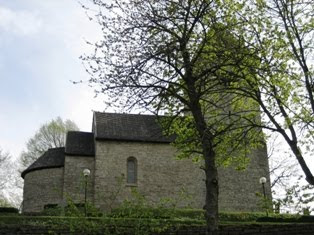The area is stunningly beautiful whatever the season is, with cherry trees in springtime or summer, dressed in green jacket and as beautiful during fall, when the deciduous forest is burning in autumn colours.
The finest hills close to the diabase slope are well-grazed, natural grasslands. Here grow common plants like milkwort, eyebright and sand violas, which are small but unmistakably perfect.
The old fields, which are also browsed, are lined with rows of cherry and ash trees, and beautiful stone walls covered with moss.
Towards Skaravägen where the ground is richer in water, grows Ostrich fern, a fern that can grow as tall as 160cm.
The Nåpabäck that in places flows over limestone terraces, is one of several streams in the area. Many small and large animals can be seen in the fields.
In the fall, spotted nutcrackers gather hazelnuts eagerly, for their winter repository.
Early in the spring mornings, hares can be seen in the fields, fighting over females.
In the south, Våmb's meadows are adjacent to a golf course. Some areas of the court are treated as hay field and there grows a big variety of species.
The meadows can be reached from Simsjövägen or from the resting area of the road to Skara.
According to the legend, the pretty little church of Våmb that lays on the other side of Skaravägen, was erected by St helena (Elin) during the 1130s on the site of a former pagan temple, which stood there for over 500 years, in the large village of Wam-Wam as Våmb was called during the 1270s.

At Hanahögen, just south of the church, there might have been a monastery.
In Gullhögen (where the Cementa factory is located today), a hoard of three not well crafted golden arm-rings one of which has engraved crescents, has been found.





No comments:
Post a Comment